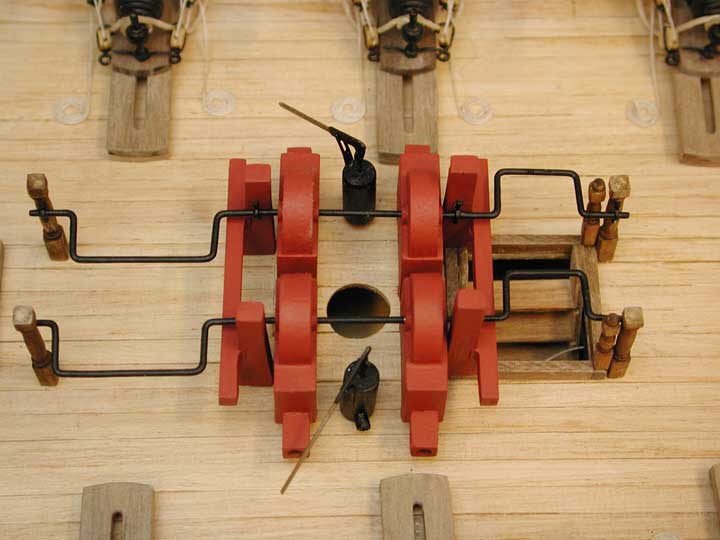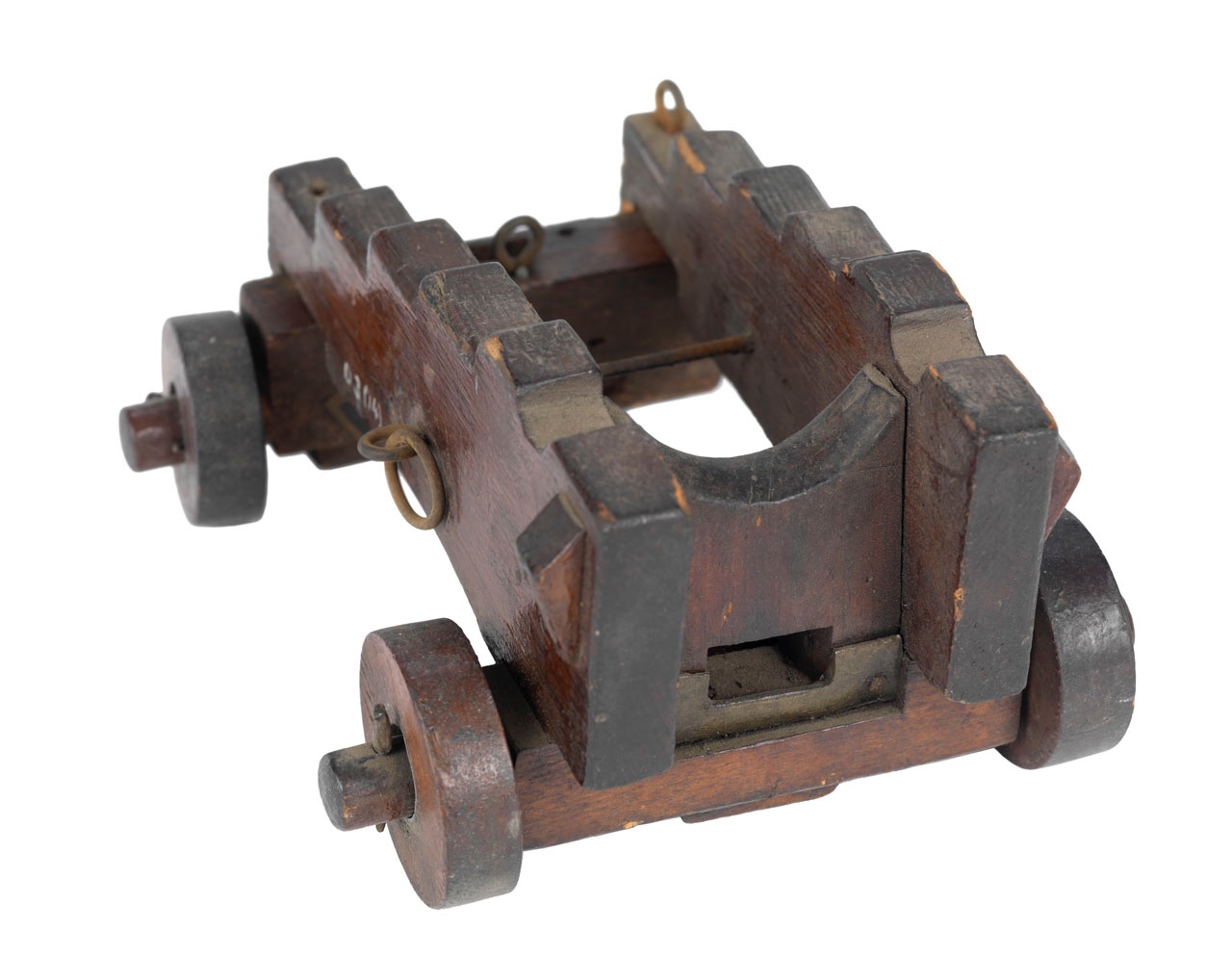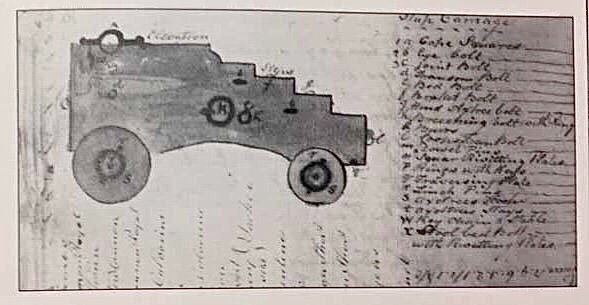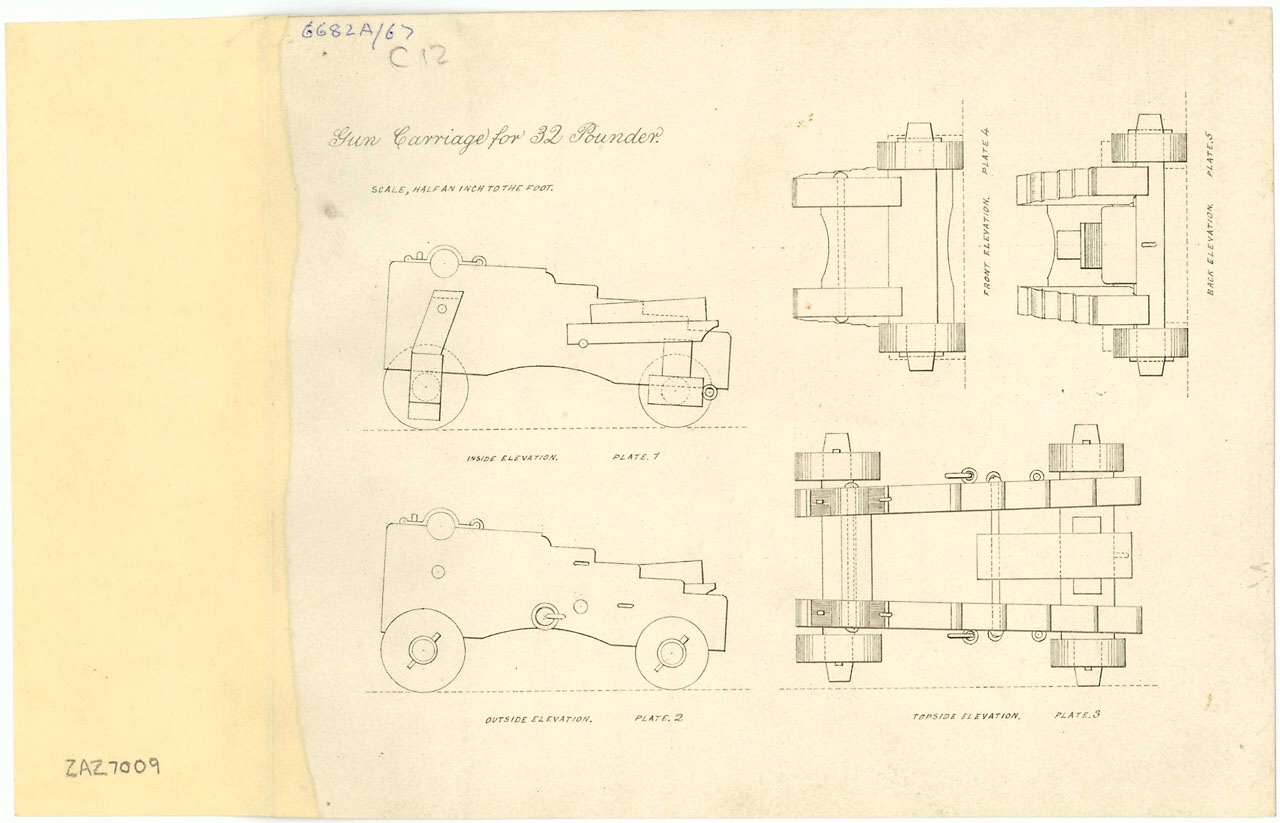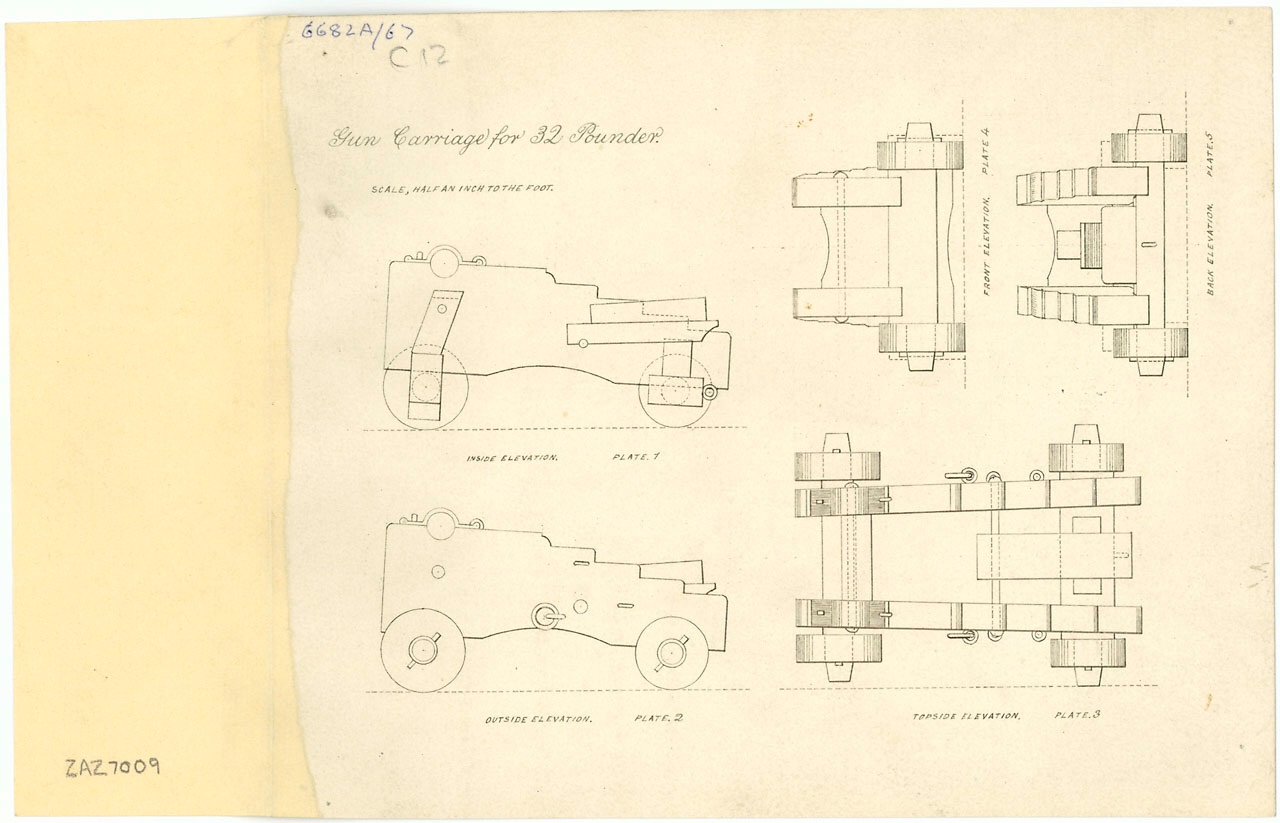-
Posts
546 -
Joined
-
Last visited
Content Type
Profiles
Forums
Gallery
Events
Everything posted by Morgan
-
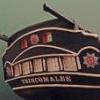
Trumpeter Scharnhorst Battlecruiser 1/200 is coming soon.
Morgan replied to yvesvidal's topic in Plastic model kits
That’s like those Vanguard Model kits, they all come in at under £100 🙄🤥 -
Roger raises a valid point about a broader appeal than merely the ship. A very pertinent and striking contrast is that less than a kilometre from Unicorn is the RSS Discovery, the ship that is part of a museum complex that looks at polar exploration, and obviously Captain Scott in particular, this get far more attention from the general public. Of course there is nothing like a dead hero to create public interest. If they can get Unicorn located close bye then hopefully some footfall will rub-off. And for the Admirals there is the new Scotland Victoria and Albert museum of design, sister of the London museum, together this makes for a worthwhile destination for visitors. Gary
- 13 replies
-
- HMS Unicorn
- preservation
-
(and 2 more)
Tagged with:
-
There is a large new building outside the museum at present where a WW2 Rescue Motor Launch is being restored. Also, the museum is bidding to buy a historic sword collection, which includes Nelson fighting sword, fingers crossed they secure it. So small steps, but it is building. Gary
- 13 replies
-
- HMS Unicorn
- preservation
-
(and 2 more)
Tagged with:
-
Where I live in Hartlepool we have the National Museum of the Royal Navy North, home to Europe’s oldest floating warship HMS Trincomalee, Unicorn’s older sister ship, with the NMRN looking to increase its presence here. So it is possible to build around a single ship. There is a strong local attachment to Unicorn in Dundee, and I don’t imagine they will let her go, so there is that precarious tension between income and cost for a relatively unknown ship. But things look like they are moving at last. Gary
- 13 replies
-
- HMS Unicorn
- preservation
-
(and 2 more)
Tagged with:
-
I recall reading that a several decades ago, the roof, which is original to her launch and placement in ordinary, was trimmed back, reducing the overhang. This ‘cosmetic’ change had far reaching consequences. With the pronounced overhang rainwater was kept away from the ship, but once it was cut back rainwater entered her top timbers and permeated throughout the hull. I believe it was also reduced over the bow (you can see the modern covering on the first photo above), rather than the original timber covering, this has contributed to water ingress at the bow. All of this accelerated deterioration, including the hogging. Once the impact was understood the roof was re-extended, but the damage was done. A few years ago (probably 10+ when I think about it) the planned conservation was all about minimal intrusive works and keeping as much original material as possible, even chemical injection was being considered to stabilise the timber, but it now sounds like they are beyond that if they are searching out for oak trees, probably more restoration than conservation lies ahead. And to think in the 1960’s they were still holding on to the prospect of masting her. Internally she is in fine condition, and a great testament to Sir Robert Seppings innovations. Even the roof is generally untouched, and of significant archaeological and historic importance in its own right, masting her would have destroyed that artefact. Hopefully they can find a way to get her sorted. Gary
- 13 replies
-
- HMS Unicorn
- preservation
-
(and 2 more)
Tagged with:
-
Victory’s figurehead dating from 1815, that may have earlier 1803 elements has been discovered, it seems it was disassembled in 2009 with a chainsaw when they thought it was a 20th Century reconstruction! https://www.portsmouth.co.uk/news/defence/scientists-rediscover-200-year-old-royal-navy-figurehead-mistakenly-sawn-pieces-3129766 Gary
-
Certainly for British service as Surprise L’Unite was fitted with 4 chain pumps, 2 pair either side of the mainmast, the other feature is an Elm Tree or Brake pump. The book ‘The Frigate Surprise’ by Brian Lavery and Geoff Hunt show this in drawings provided by Karl Heinz Marquardt (they actually have 2 Elm Tree Pumps), you can also see it in the photo below which is from Caldercrafts long awaited prototype photos for the Surprise. The drawings you are using don’t show all details, so you can’t rely on something not being there, there is a large degree of variability in Admiralty draughts in what they do and don’t show. Gary
-
Hi Daniel, My thoughts on your points are as follows: Two deckers - this probably is a matter of space as you highlight and probably manpower, a three decker can accommodate 2 decks of men manning crank handles, but it also has a larger hull capacity and in a bad situation more water to shift, so may merely be a matter of convenience (men and available space). I think there would have been a continuation of the taper between the middle deck wheels and foot of the pump system, so they would be in line but still tapering between the lower and middle decks. Having looked in the pump heads on Victory you can see that this was not precision engineering, these are blacksmith produced parts with a wide degree of tolerance, introducing any in-line secondary wheels would be problematic in terms of aligning them. Then there is ensuring that an upper and lower drive system worked at the same rate of revolutions is an issue that would put undue strain on the system, we know they often broke down but two rates of drive would cause tension in the system leading to more frequent breakages, if it would work at all. Take a look at the scene in Master and Commander where after the first battle they are operating the chain pumps, it isn’t a smooth rotational operation it is very much a harsh jerky lift and push, you could not do this over two decks on the same system. For the double height pumps to work over two levels would require that the suction or discharge side of the system to open into the lower and upper cisterns, but that the return side was sealed from the lower cistern and passed through so the water could not flow back. The discharge tube could be open to the lower cistern if operated from the upper level, once the dale was sealed and the cistern chamber full then the water would continue to lift to the upper cistern. If a secondary set of wheels was placed in the lower cistern then both sides (discharge and return) would both have to be open to accommodate the chain linkages on the sprockets, this means water would be pulled back down the system rather than pushed to the upper cistern - gravity simply dictates this. Double height operation was probably not common, for merely pumping the ship dry I would imagine a single set of pumps being used. In a serious situation then both sets, but was there discharge scuppers for two pumps per side on the lower level? It could be there was a single set to reduce openings and another set on the middle deck. I would think normal operational pumping would always be discharged on the lower deck which ever set was used - simply less effort to raise the water, but when it mattered you would discharge to both levels. Gary
-
Daniel, My research correlates with what you have captured. The single level chain pumps had a combined cistern, water could be discharged from either side with a simple partitioning of the cistern at the centre to allow water to discharge to port or starboard irrespective of which pump was operating. It had an access hatch at the centre to allow the partition to be put in place that then closed off the port from the starboard cistern for single pump / side use. The middle deck chain pumps only operated from this deck level, they could discharge to either the lower or middle deck level by simply closing off the discharge ports on the other deck, they operated single side only. The lower deck single chain pump crank handles passed through the lower cistern cases for the double height pumps, they did not drive or affect the operation of these pumps so operated independently. This was to maximise the number of men who could be deployed to the pumps facilitating an increase in the effective length of the crank handles per pump. The Elm Tree or Brake Pumps are as you have them, but note that they could discharge to multiple levels having outlets that could be plugged / unplugged, so for example the middle deck pump could also discharge to the lower deck by blocking off the middle deck outlet. This feature isn’t commonly shown, but is captured by several drawings at the NMM. There is then the forward pump casing shown on the 1788 plans, this was most likely a fire pump adjacent to the Galley. Gary
-
Just for Info Steel describes these forms of planking as follows: The difference between Top and Butt and Anchor Stock is the first is asymmetrical and the latter symmetrical. Just thought seeing which is which helps the conversation. Little known factoid for fun 🤪, Victory has several surviving 19th Century strakes of Top and Butt planking below the main wale which shows she wasn’t parallel planked, but also points to the Wales probably being one of the other two forms before they ripped them off her in the 1850’s, which leads back to the Sphinx Wales being planked Hook and Butt as well. Gary
-
Falconer notes that the eyebolts were fixed by way of a ‘clench’ which seems a bit like a rove used to fix nails on clinker built ship. Gregory - The problem with the Constitution is if you look inboard at the breaching rope fixings is that they are not eyebolts, but a more modern double bolt affair and you do see these fixed outboard, but if you look at the in haul / training tackle fixings these are traditional eyebolts and as the photo shows these do not show outboard, these are fitted mid port so should appear to the side of the gunport outboard. Open to other info that adds to the discussion. Gary
-
I agree, it needs to be an eyebolt affair with whatever capping nut is being used prevented from pulling through the wood by means of an outsize washer of some form, so I agree with the configuration of the bolts shown by Pavel at the start of this thread, but just not surface mounted. I think this is merely stylisation as Druxy mentions. Gary
-
Only in respect of British ships they are not to be seen on any of the present historic ships, neither are they evident on 19th Century photos or contemporary paintings. They must have been rebated in to the external planking and plugged or set in to the frames, after all exposed metalwork corrodes and the last thing you need to break are the retaining bolts (although they sometimes did). Gary
-
That is an elegant solution, otherwise where do you stack the spare grating on such crowded decks, so makes sense. Gary
-
A little more digging has yielded some further information. In an article in The Mariner’s Mirror in November 1952 by JD Moody he has the following to say: “In the late eighteenth century ‘horns’ were added to the front edge of the brackets [cheeks] to butt against the port sill when the gun was run out. The first I have seen are those on the Royal George carriage, where they are nailed on. Later they appear as an integral part of the lower planks of the brackets. (These were made of two planks dowelled and bolted together.). They are referred to in 1810 as showing that a certain carriage was old fashioned, but engravers continued to show them until the 1830’s, though often in side elevation and not in plan view. They had something to do with the amount of tumble-home of the ship’s side and the necessity for keeping the fore-trucks clear of the waterways, but it seems that they were eventually replaced by a curved chock attachment to the port sill, suggested in 1809 and in general use in 1827.” “Yet another obscure addition was the use of side cleats. These were triangular pieces of wood nailed to the outer sides of the brackets, just in front of the breast bolt. They were usually calibre in width and occupied about two-thirds of the depth of the bracket, with the narrow sloping edge on top. I have not been able to trace their use, as there seems to have been no need to reinforce the carriage at this point, but they lasted from the turn of the century till about 1830. ….. Tackle loops were placed vertically on the last step of the brackets, being the upper end of the rearmost hind-axletrees bolts. Later these ‘endloops’ replaced the older sideloops, but on models of about 1827 both kinds are to be seen in use together. They probably indicate a greater use of tackles in the training of the gun.” I understand the reference to the Royal George means the ship which sank at Spithead in 1782, earlier parts of the article state that a carriage was recovered from the wreck and displayed at the Victory museum, I have yet to locate any images or references. This would now be the NMRN Museum Portsmouth. This information doesn’t sit with Lavery that I quoted above as his reference to the 1815 drawing suggests a later use, whilst this is earlier. I do wonder if these side pieces were nothing more than a sacrificial addition to protect the cheeks from chafing and damage by the breaching rope when fired. If the rope were to act directly on the front edge of the cheeks you could envisage it causing damage to the vulnerable end grain, whereas these fittings would keep the rope away. The NMM also have a model of an undated gun carriage (SLR2896) that has the side fixtures, but not the frontal horns, it's suggested dates are merely 1800 - 1900. Daniel - the 'Rivers' image is undated, I'll be visiting Portsmouth and the NMRN library when it reopens I'll make a note to have a look. Gary
-
I agree, although the depictions and photos I’ve seen have various size eyes, but whatever they won’t carry the main breaching rope. The only way that I could see this would work relative to the breach rope would be if they were to accommodate lashings to constrain the breaching rope, possibly to help control the gun jumping when fired as the breach would rise as it pivoted on the trunnions. Gary
-
Allan, The same carriage is to be found at p129 of Lavery’s ‘The Arming and Fitting of English Ships of War; 1600 - 1815’ (copy below), he dates it to c1815. It could be that these were the carriages in place when the painting was undertaken many years later, we know Victory had later pattern saluting guns by then, presumably the carriages would also have been of a later pattern. This wasn’t an uncommon problem, many Victorian painters did not allow for the fact the sharp had been transformed since 1805. This would also explain the double block anomaly, the painting is supposed to be the quarterdeck where there were short 12-Pounders in 1805, but by 1860 may have had the short 32-Pounder saluting guns, those which are now positioned on the quayside adjacent to Victory. In respect of the rear eyebolts apparently these were optional, whilst not the most academic book Osprey’s ‘Napoleonic Naval Armaments 1792 - 1815 has these as not always fitted, but says they are associated with the breaching rope, says no more than this. But I must admit you see carriages with and without this eye from the late 1700’s to the mid 1800’s. I had wondered initially if they were for older pattern cannon without the cast thimble for the breaching rope, but that doesn’t seem to hold up to scrutiny as Blomefield patter examples exist with and without those eyes. Gary
-
Those eye bolts don’t exist on the 1800 pattern carriage drawing held by the NMM ref ZAZ7009, or in the Victory’s gunners notebook - William Rivers, I’ve attached both below. They may be era specific, but I also recall seeing somewhere that these were used on French carriages as these were for the side training tackle rather than in the cheeks as the English did, I’ll try to recall where I saw this. Gary
-
Some of Bugler’s assertions about the number of existing Trafalgar guns have been proven wrong, there are for example only 3Nr. 32-Pounders and 1Nr. alleged 24-Pounder, not the number he claimed, I say alleged because Victory had the 24-Pounders removed in 1808 and replaced with 18-Pounders and in the 1820’s she was reduced to 21 guns, the 24-Pounders are also of the wrong design. So it is not clear where the current 24-Pounder ‘Trafalgar’ cannon comes from. The cannon are identifiable from their individual cast and makers marks stamped on the trunnions, these can be traced from one commission to the next. There is no dispute on the Blomefield pattern guns they are of the standard pattern, there is no ‘Victory’ specific design, and what Bugler has drawn is correct. For the 32-Pounder gun carriage you need NMM’s drawing ZAZ7009 dated by Brian Lavery to 1800, this is attached below, you would need a full size copy of the original to scale it at ‘Half an inch to the foot’ this would be the definitive version. You can order a copy the repro reference is J2117. You could try to print re-scale it, the original drawing is noted as being 185mm x 290mm.
-
If I may say based on the latest exchanges, these emphasise the need for further research, and there is a way to go, the excellent drawings are a good starting point. That said caution needs to be exercised in respect of researching the true appearance and fit-out of Victory during the Trafalgar campaign. One of the chief distractions is the ship herself, when ‘restored’ during the 1920’s many compromises were made for a variety of reasons, such as cost, operational needs, and available research, the gun carriages may well be a victim of such compromises. Certainly the advisory committee had disagreements on how to proceed in the 1920’s and those errors are still being understood and corrected. Bugler merely records the ship as she was in the 1960’s, he does not seek to establish what the ship looked like in 1805, and somewhat slavishly follows the 1920’s reconstruction, in that respect he repeats and perpetuates whatever inaccuracies were built in to her structure. McGowan and McKay merely update Bugler’s work, with none of them challenging the accuracy of the ship as presented. An example is the contribution I made at post #4 above, the pattern of guns carried currently by Victory are all of the Blomefield type, this is not how she was armed. A large proportion of her guns were of the older pattern Armstrong type, as confirmed by the Admiralty records at her recommissioning in 1803. Here for instance, not having looked at the gun carriages, does the pattern of the gun change the carriage due to weight, diameter, trunion position for instance - does a 24-Pounder Blomefield use the same carriage as a 24-Pounder Armstrong? Gary
-
I live only a mile from the Trincomalee, walk past her every day and go on board several times a year. I can confirm that these are not capstan bars, they are hand spikes for training the guns. The guns are all fibre glass, most, but not all are fully rigged, you can see the breech ropes and training tackle on the above screen shot. The tail ropes to the rear of the guns are available but not fully rigged as they would be a trip hazard and interfere with touring the ship. There is also a full compliment of equipment. The un-rigged guns are generally for educational display. The Trincomalee is used as a film location at least several times a year so they are able to rig and equip all guns as and when required. Gary
About us
Modelshipworld - Advancing Ship Modeling through Research
SSL Secured
Your security is important for us so this Website is SSL-Secured
NRG Mailing Address
Nautical Research Guild
237 South Lincoln Street
Westmont IL, 60559-1917
Model Ship World ® and the MSW logo are Registered Trademarks, and belong to the Nautical Research Guild (United States Patent and Trademark Office: No. 6,929,264 & No. 6,929,274, registered Dec. 20, 2022)
Helpful Links
About the NRG
If you enjoy building ship models that are historically accurate as well as beautiful, then The Nautical Research Guild (NRG) is just right for you.
The Guild is a non-profit educational organization whose mission is to “Advance Ship Modeling Through Research”. We provide support to our members in their efforts to raise the quality of their model ships.
The Nautical Research Guild has published our world-renowned quarterly magazine, The Nautical Research Journal, since 1955. The pages of the Journal are full of articles by accomplished ship modelers who show you how they create those exquisite details on their models, and by maritime historians who show you the correct details to build. The Journal is available in both print and digital editions. Go to the NRG web site (www.thenrg.org) to download a complimentary digital copy of the Journal. The NRG also publishes plan sets, books and compilations of back issues of the Journal and the former Ships in Scale and Model Ship Builder magazines.






